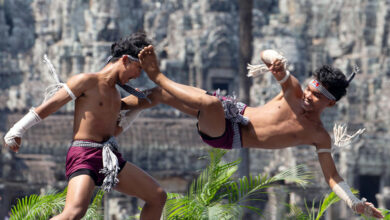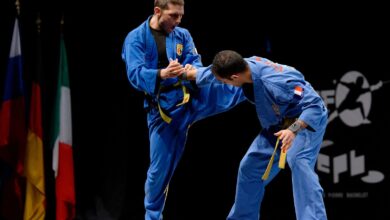Brazilian Jiu-Jitsu: The Art of Leverage, Strategy, and Survival

Martial Arts: Brazilian Jiu-Jitsu (BJJ) is one of the most influential martial arts in the world today, known for its focus on ground fighting, submissions, and leverage-based techniques. It has played a crucial role in the development of modern mixed martial arts (MMA) and has become a global sport with millions of practitioners. However, BJJ’s journey began long before it gained international fame, evolving from traditional Japanese Jujutsu and Judo into a unique and highly effective grappling system.
Origins and Early Influences
Japanese Jujutsu and Judo Roots
Brazilian Jiu-Jitsu traces its origins to Japanese Jujutsu, an ancient samurai martial art that specialized in grappling, joint locks, chokes, and throws. Jujutsu was developed for battlefield combat, where armored warriors needed techniques to control and subdue opponents without weapons.
In the late 19th and early 20th centuries, Jigoro Kano, a Japanese martial artist, modified traditional Jujutsu techniques to create a safer and more structured system called Judo. Kano’s Judo focused on throws, pins, joint locks, and chokeholds, emphasizing maximum efficiency with minimal effort. Judo eventually became the foundation of Brazilian Jiu-Jitsu.
Mitsuyo Maeda: The Man Who Brought Jiu-Jitsu to Brazil
One of Jigoro Kano’s top students, Mitsuyo Maeda, played a pivotal role in introducing Judo (often referred to as Kano Jiu-Jitsu at the time) to Brazil. Maeda was a highly skilled judoka and a master of ground fighting (ne-waza). In 1914, he traveled to Brazil as part of a Japanese immigration initiative and settled in Belém do Pará.
Maeda impressed locals with his grappling abilities, defeating much larger and stronger opponents using technique and leverage. He soon began teaching his art to a select group of students, including Carlos Gracie, who would become one of the founding figures of Brazilian Jiu-Jitsu.
The Birth of Brazilian Jiu-Jitsu
The Gracie Family and the Evolution of BJJ

Carlos Gracie and his brothers, particularly Hélio Gracie, adapted and refined Maeda’s techniques to develop what would become known as Brazilian Jiu-Jitsu. The key innovations of BJJ included:
- A greater emphasis on ground fighting and positional control.
- The development of a guard system, which allowed smaller fighters to neutralize and submit larger opponents.
- An open challenge culture, where BJJ fighters would test their techniques against practitioners of other martial arts in real combat situations (Vale Tudo).
Hélio Gracie, in particular, played a crucial role in modifying techniques to work for smaller, weaker fighters. Due to his small frame, he relied heavily on leverage and technique rather than brute strength. His refinements to submissions, guard techniques, and escapes became the foundation of modern BJJ.
Vale Tudo: Testing BJJ in No-Rules Fights
In the early to mid-20th century, Brazilian Jiu-Jitsu was tested in Vale Tudo (Portuguese for “anything goes”) fights, which were bare-knuckle, no-rules combat events. The Gracie family challenged fighters from various martial arts, proving the effectiveness of BJJ against boxers, wrestlers, and traditional strikers.
One of the most famous events in BJJ history was the Gracie Challenge, where the Gracie family invited fighters of any style to test themselves against BJJ practitioners. These matches helped establish BJJ’s reputation as an elite fighting system.
The Global Expansion of Brazilian Jiu-Jitsu
BJJ Enters the United States and UFC
BJJ remained largely confined to Brazil until the early 1990s, when Rorion Gracie moved to the United States and co-founded the Ultimate Fighting Championship (UFC) in 1993. The UFC was created as a no-holds-barred tournament to determine the most effective martial art.
In UFC 1, Rorion’s brother, Royce Gracie, shocked the world by defeating much larger and stronger opponents using BJJ. Royce’s success against strikers, wrestlers, and traditional martial artists proved the superiority of ground fighting, leading to the rise of BJJ in MMA.
After Royce’s victories, martial artists and fighters from around the world began incorporating BJJ into their training, leading to an explosion of interest in Brazilian Jiu-Jitsu.
The IBJJF and Sport Jiu-Jitsu Growth
As BJJ gained international popularity, it evolved into both a combat sport and a self-defense system. The International Brazilian Jiu-Jitsu Federation (IBJJF) was founded by Carlos Gracie Jr. to regulate competitions and establish a structured ranking system.
Sport BJJ introduced point-based tournaments with strict rulesets, including:
- Gi (kimono) and No-Gi competitions
- A belt-ranking system (White to Black Belt)
- Weight classes and time limits
Major tournaments such as the World Jiu-Jitsu Championship (Mundials), the ADCC Submission Wrestling World Championship, and Pan American Jiu-Jitsu Championship became prestigious events, attracting elite grapplers worldwide.
The Evolution of Brazilian Jiu-Jitsu in Modern Combat Sports
BJJ in MMA
Brazilian Jiu-Jitsu remains a fundamental discipline in mixed martial arts (MMA). Today, every top MMA fighter incorporates BJJ into their skill set, using techniques like:
- Triangle chokes, armbars, and rear-naked chokes for submissions.
- Guard control and sweeps for positional dominance.
- Defensive strategies to avoid ground-and-pound from wrestlers.
Fighters like Anderson Silva, BJ Penn, Demian Maia, Charles Oliveira, and Khabib Nurmagomedov have demonstrated the power of BJJ in high-level MMA competition.
The Rise of No-Gi Grappling
In recent years, No-Gi BJJ (submission wrestling) has surged in popularity. Organizations like ADCC (Abu Dhabi Combat Club), EBI (Eddie Bravo Invitational), and Polaris have pushed the boundaries of submission-based grappling.
Prominent No-Gi specialists, such as Gordon Ryan, Craig Jones, and Garry Tonon, have revolutionized modern BJJ with aggressive submission strategies, particularly leg locks and positional control.
Philosophy and Principles of BJJ
Brazilian Jiu-Jitsu is more than just a martial art; it is a philosophy of self-improvement, perseverance, and adaptability. Key principles include:
- Leverage Over Strength – Smaller, weaker individuals can defeat larger opponents through superior technique.
- Positional Dominance – Control leads to submission; proper positioning ensures safety and attack opportunities.
- Continuous Learning – BJJ has an ever-evolving nature, requiring constant adaptation and innovation.
- Humility and Respect – Practitioners develop discipline, patience, and a growth mindset.
Brazilian Jiu-Jitsu has grown from a small martial art in Brazil to a global phenomenon practiced by millions. It has influenced MMA, self-defense, and sport grappling, proving its effectiveness in both combat and personal development.
With its rich history, continuous evolution, and deep technical aspects, BJJ remains one of the most respected and sought-after martial arts in the world today.




One Comment